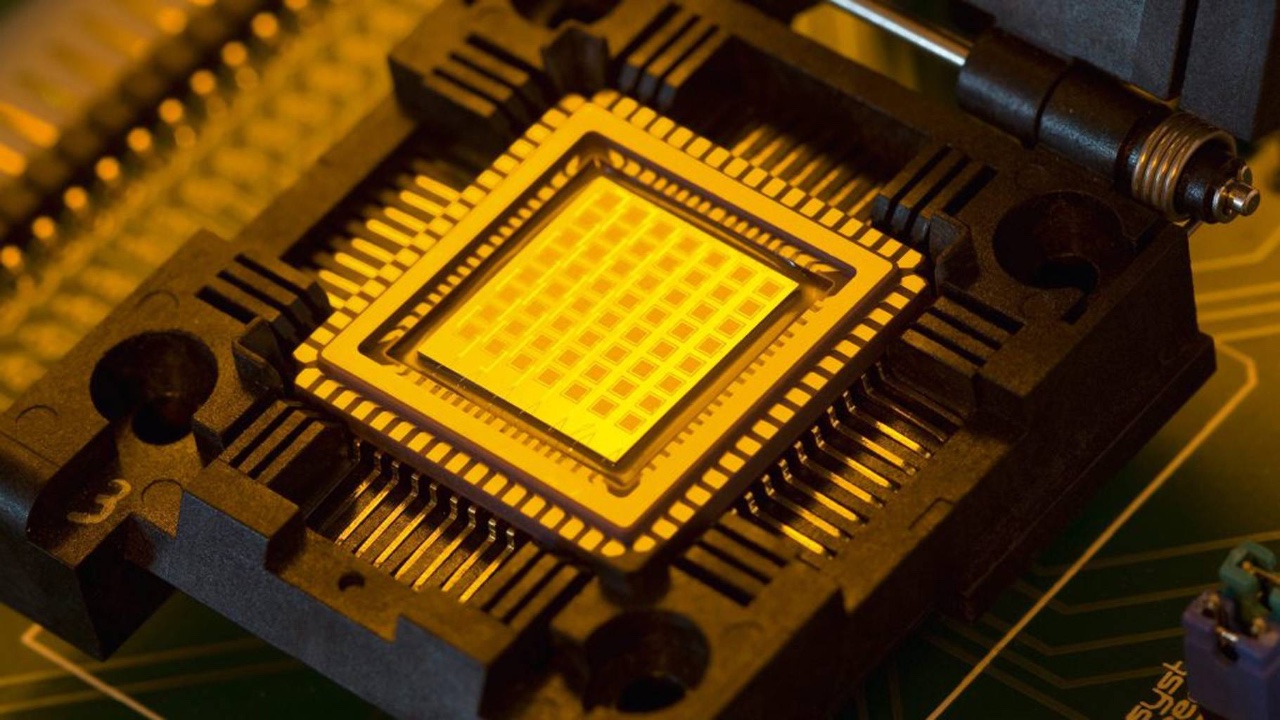mirror of
https://github.com/LCTT/TranslateProject.git
synced 2024-12-26 21:30:55 +08:00
171 lines
9.1 KiB
Markdown
171 lines
9.1 KiB
Markdown
[#]: collector: (lujun9972)
|
||
[#]: translator: (Chao-zhi)
|
||
[#]: reviewer: (wxy)
|
||
[#]: publisher: (wxy)
|
||
[#]: url: (https://linux.cn/article-13129-1.html)
|
||
[#]: subject: (A new way to build cross-platform UIs for Linux ARM devices)
|
||
[#]: via: (https://opensource.com/article/20/5/linux-arm-ui)
|
||
[#]: author: (Bruno Muniz https://opensource.com/users/brunoamuniz)
|
||
|
||
一种为 Linux ARM 设备构建跨平台 UI 的新方法
|
||
======
|
||
|
||
> AndroidXML 和 TotalCross 的运用为树莓派和其他设备创建 UI 提供了更简单的方法。
|
||
|
||

|
||
|
||
为应用程序创建良好的用户体验(UX)是一项艰巨的任务,尤其是在开发嵌入式应用程序时。今天,有两种图形用户界面(GUI)工具通常用于开发嵌入式软件:它们要么涉及复杂的技术,要么非常昂贵。
|
||
|
||
然而,我们已经创建了一个概念验证(PoC),它提供了一种新的方法来使用现有的、成熟的工具为运行在桌面、移动、嵌入式设备和低功耗 ARM 设备上的应用程序构建用户界面(UI)。我们的方法是使用 Android Studio 绘制 UI;使用 [TotalCross][2] 在设备上呈现 Android XML;采用被称为 [KnowCode][4] 的新 [TotalCross API][3];以及使用 [树莓派 4][5] 来执行应用程序。
|
||
|
||
### 选择 Android Studio
|
||
|
||
可以使用 TotalCross API 为应用程序构建一个美观的响应式用户体验,但是在 Android Studio 中创建 UI 缩短了制作原型和实际应用程序之间的时间。
|
||
|
||
有很多工具可以用来为应用程序构建 UI,但是 [Android Studio][6] 是全世界开发者最常使用的工具。除了它被大量采用以外,这个工具的使用也非常直观,而且它对于创建简单和复杂的应用程序都非常强大。在我看来,唯一的缺点是使用该工具所需的计算机性能,它比其他集成开发环境 (IDE) 如 VSCode 或其开源替代方案 [VSCodium][7] 要庞大得多。
|
||
|
||
通过思考这些问题,我们创建了一个概念验证,使用 Android Studio 绘制 UI,并使用 TotalCross 直接在设备上运行 AndroidXML。
|
||
|
||
### 构建 UI
|
||
|
||
对于我们的 PoC,我们想创建一个家用电器应用程序来控制温度和其他东西,并在 Linux ARM 设备上运行。
|
||
|
||
![Home appliance application to control thermostat][8]
|
||
|
||
我们想为树莓派开发我们的应用程序,所以我们使用 Android 的 [ConstraintLayout][10] 来构建 848x480(树莓派的分辨率)的固定屏幕大小的 UI,不过你可以用其他布局构建响应性 UI。
|
||
|
||
Android XML 为 UI 创建增加了很多灵活性,使得为应用程序构建丰富的用户体验变得容易。在下面的 XML 中,我们使用了两个主要组件:[ImageView][11] 和 [TextView][12]。
|
||
|
||
```
|
||
<ImageView
|
||
android:id="@+id/imageView6"
|
||
android:layout_width="273dp"
|
||
android:layout_height="291dp"
|
||
android:background="@drawable/Casa"
|
||
tools:layout_editor_absoluteX="109dp"
|
||
tools:layout_editor_absoluteY="95dp" />
|
||
<TextView
|
||
android:id="@+id/insideTempEdit"
|
||
android:layout_width="94dp"
|
||
android:layout_height="92dp"
|
||
android:background="#F5F5F5"
|
||
android:text="20"
|
||
android:textAlignment="center"
|
||
android:gravity="center"
|
||
android:textColor="#000000"
|
||
android:textSize="67dp"
|
||
android:textStyle="bold"
|
||
tools:layout_editor_absoluteX="196dp"
|
||
tools:layout_editor_absoluteY="246dp" />
|
||
```
|
||
|
||
TextView 元素用于向用户显示一些数据,比如建筑物内的温度。大多数 ImageView 都用作用户与 UI 交互的按钮,但它们也需要实现屏幕上组件提供的事件。
|
||
|
||
### 用 TotalCross 整合
|
||
|
||
这个 PoC 中的第二项技术是 TotalCross。我们不想在设备上使用 Android 的任何东西,因为:
|
||
|
||
1。我们的目标是为 Linux ARM 提供一个出色的 UI。
|
||
2。我们希望在设备上实现低占用。
|
||
3。我们希望应用程序在低计算能力的低端硬件设备上运行(例如,没有 GPU、 低 RAM 等)。
|
||
|
||
首先,我们使用 [VSCode 插件][13] 创建了一个空的 TotalCross 项目。接下来,我们保存了 `drawable` 文件夹中的图像副本和 `xml` 文件夹中的 Android XML 文件副本,这两个文件夹都位于 `resources` 文件夹中:
|
||
|
||
![Home Appliance file structure][14]
|
||
|
||
为了使用 TotalCross 模拟器运行 XML 文件,我们添加了一个名为 KnowCode 的新 TotalCross API 和一个主窗口来加载 XML。下面的代码使用 API 加载和呈现 XML:
|
||
|
||
```
|
||
public void initUI() {
|
||
XmlScreenAbstractLayout xmlCont = XmlScreenFactory.create("xml / homeApplianceXML.xml");
|
||
swap(xmlCont);
|
||
}
|
||
```
|
||
|
||
就这样!只需两个命令,我们就可以使用 TotalCross 运行 Android XML 文件。以下是 XML 如何在 TotalCross 的模拟器上执行:
|
||
|
||
![TotalCross simulator running temperature application][15]
|
||
|
||
完成这个 PoC 还有两件事要做:添加一些事件来提供用户交互,并在树莓派上运行它。
|
||
|
||
### 添加事件
|
||
|
||
KnowCode API 提供了一种通过 ID(`getControlByID`) 获取 XML 元素并更改其行为的方法,如添加事件、更改可见性等。
|
||
|
||
例如,为了使用户能够改变家中或其他建筑物的温度,我们在 UI 底部放置了加号和减号按钮,并在每次单击按钮时都会出现“单击”事件,使温度升高或降低一度:
|
||
|
||
```
|
||
Button plus = (Button) xmlCont.getControlByID("@+id/plus");
|
||
Label insideTempLabel = (Label) xmlCont.getControlByID("@+id/insideTempLabel");
|
||
plus.addPressListener(new PressListener() {
|
||
@Override
|
||
public void controlPressed(ControlEvent e) {
|
||
try {
|
||
String tempString = insideTempLabel.getText();
|
||
int temp;
|
||
temp = Convert.toInt(tempString);
|
||
insideTempLabel.setText(Convert.toString(++temp));
|
||
} catch (InvalidNumberException e1) {
|
||
e1.printStackTrace();
|
||
}
|
||
}
|
||
});
|
||
```
|
||
|
||
### 在树莓派 4 上测试
|
||
|
||
最后一步!我们在一台设备上运行了应用程序并检查了结果。我们只需要打包应用程序并在目标设备上部署和运行它。[VNC][19] 也可用于检查设备上的应用程序。
|
||
|
||
整个应用程序,包括资源(图像等)、Android XML、TotalCross 和 Knowcode API,在 Linux ARM 上大约是 8MB。
|
||
|
||
下面是应用程序的演示:
|
||
|
||
![Application demo][20]
|
||
|
||
在本例中,该应用程序仅为 Linux ARM 打包,但同一应用程序可以作为 Linux 桌面应用程序运行,在Android 设备 、Windows、windows CE 甚至 iOS 上运行。
|
||
|
||
所有示例源代码和项目都可以在 [HomeApplianceXML GitHub][21] 存储库中找到。
|
||
|
||
### 现有工具的新玩法
|
||
|
||
为嵌入式应用程序创建 GUI 并不需要像现在这样困难。这种概念证明为如何轻松地完成这项任务提供了新的视角,不仅适用于嵌入式系统,而且适用于所有主要的操作系统,所有这些系统都使用相同的代码库。
|
||
|
||
我们的目标不是为设计人员或开发人员创建一个新的工具来构建 UI 应用程序;我们的目标是为使用现有的最佳工具提供新的玩法。
|
||
|
||
你对这种新的应用程序开发方式有何看法?在下面的评论中分享你的想法。
|
||
|
||
--------------------------------------------------------------------------------
|
||
|
||
via: https://opensource.com/article/20/5/linux-arm-ui
|
||
|
||
作者:[Bruno Muniz][a]
|
||
选题:[lujun9972][b]
|
||
译者:[Chao-zhi](https://github.com/Chao-zhi)
|
||
校对:[wxy](https://github.com/wxy)
|
||
|
||
本文由 [LCTT](https://github.com/LCTT/TranslateProject) 原创编译,[Linux中国](https://linux.cn/) 荣誉推出
|
||
|
||
[a]: https://opensource.com/users/brunoamuniz
|
||
[b]: https://github.com/lujun9972
|
||
[1]: https://opensource.com/sites/default/files/styles/image-full-size/public/lead-images/computer_desk_home_laptop_browser.png?itok=Y3UVpY0l (Digital images of a computer desktop)
|
||
[2]: https://totalcross.com/
|
||
[3]: https://yourapp.totalcross.com/knowcode-app
|
||
[4]: https://github.com/TotalCross/KnowCodeXML
|
||
[5]: https://www.raspberrypi.org/
|
||
[6]: https://developer.android.com/studio
|
||
[7]: https://vscodium.com/
|
||
[8]: https://opensource.com/sites/default/files/uploads/homeapplianceapp.png (Home appliance application to control thermostat)
|
||
[9]: https://creativecommons.org/licenses/by-sa/4.0/
|
||
[10]: https://codelabs.developers.google.com/codelabs/constraint-layout/index.html#0
|
||
[11]: https://developer.android.com/reference/android/widget/ImageView
|
||
[12]: https://developer.android.com/reference/android/widget/TextView
|
||
[13]: https://medium.com/totalcross-community/totalcross-plugin-for-vscode-4f45da146a0a
|
||
[14]: https://opensource.com/sites/default/files/uploads/homeappliancexml.png (Home Appliance file structure)
|
||
[15]: https://opensource.com/sites/default/files/uploads/totalcross-simulator_0.png (TotalCross simulator running temperature application)
|
||
[16]: http://www.google.com/search?hl=en&q=allinurl%3Adocs.oracle.com+javase+docs+api+button
|
||
[17]: http://www.google.com/search?hl=en&q=allinurl%3Adocs.oracle.com+javase+docs+api+label
|
||
[18]: http://www.google.com/search?hl=en&q=allinurl%3Adocs.oracle.com+javase+docs+api+string
|
||
[19]: https://tigervnc.org/
|
||
[20]: https://opensource.com/sites/default/files/uploads/application.gif (Application demo)
|
||
[21]: https://github.com/TotalCross/HomeApplianceXML
|